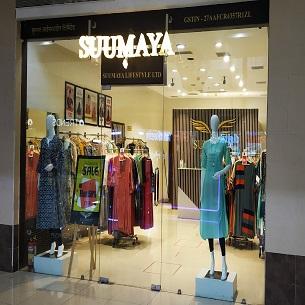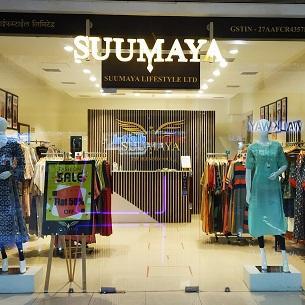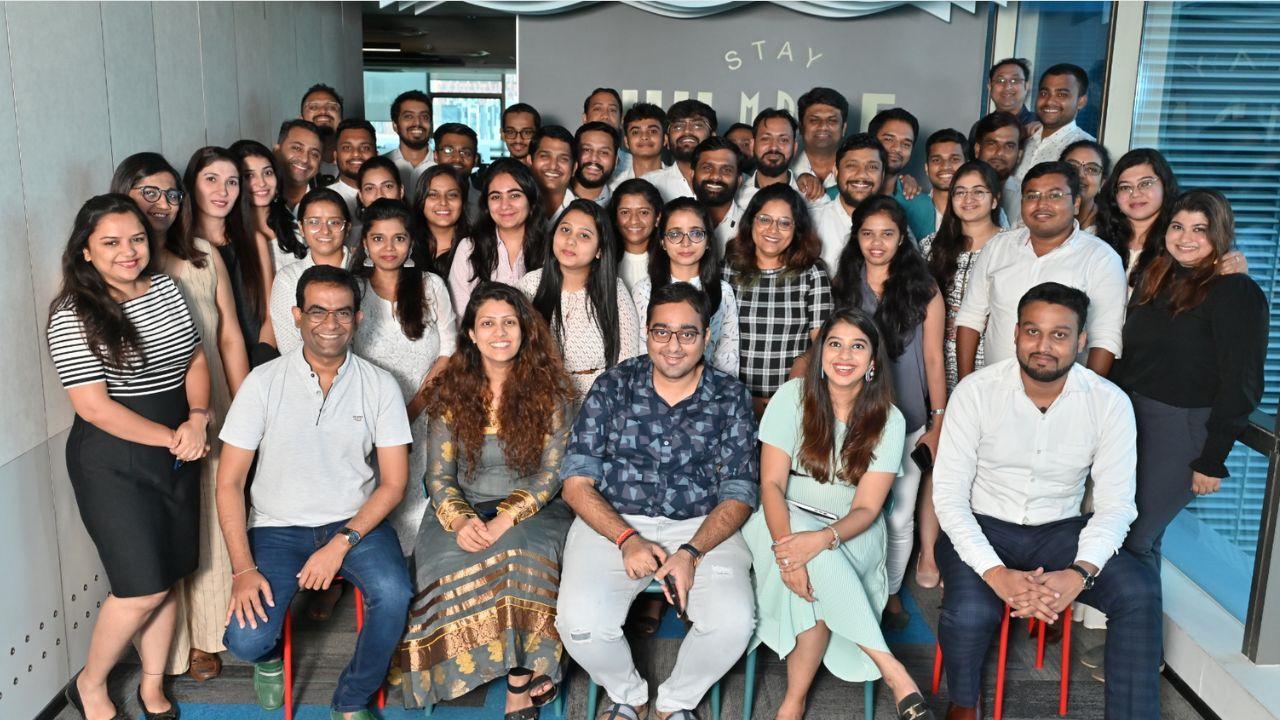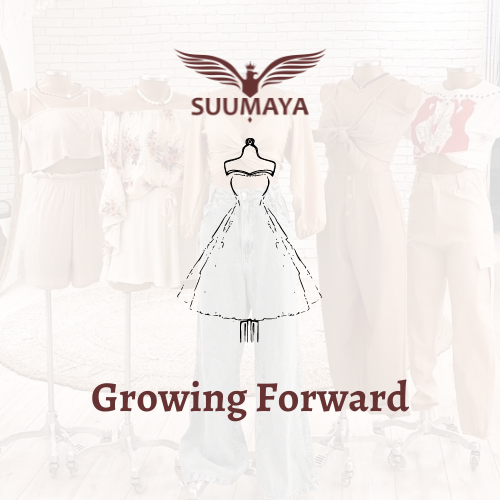

 NSE 524.35 (5.00%)
NSE 524.35 (5.00%)
Our textile business is broadly classified into two prime divisions: brand apparels and B2B.
Formally established in the year 2011, our wide array of apparel for ladies still remains our core business, riding on being highly creative and one of the fastest innovating brands when it comes to merchandizing for women’s fashion. With an end-to-end experience in the fashion industry, our designs have created a niche for themselves thanks to their creativity, innovation and exquisiteness.

Our rich product portfolio entails kurtis for contemporary ethnic wear (Ira), premium fusion wear (Ekaa) and premium occasion wear (Tag9). Our comprehensive ensemble also comprises of ready-to-wear Pret-wear designer dresses as part of our ‘season collection’. Our top-of-the-line in-house design team launches these Pret wear collections every season, much to the delight of our discerning clientele. Additionally, our popular collection of trendy western wear includes tops, tunics, bottoms, yoga pants and leggings.
Always being abreast of the times, we have also started manufacturing 3-ply masks on our fully automated machines as well as Personal Protective Equipment (PPE) kits during the course of the Covid-19 pandemic.
The company has gone through a sea of corporatizations spearheaded by the youthful, millenial management to evolve as a top-brand today. More than three decades of experience in the textiles business has given the company the strength to source at highly competitive price points and position itself as a market leader vis-à-vis the latest trends and fashion. We have been successful in continually widening the product basket and increasing the wallet share amongst women’s spending within the targeted age groups. Our ability to adapt to the changing times and agile infrastructure equipped to manufacture a wide range of products has proved to be the cornerstones of our success story.
Our textile B2B trading business focuses on trading of yarn and fabric of various genres and qualities. This key division works with B2B traders, end-users and millers for its sourcing needs. We infuse efficiency in the industry through our strength of quality sourcing and managing the entire textile supply chain end-to-end from miller to the end-user. Thanks to this, we are able to undertake trading at competitive rates in the industry.

The strength of this business lies in the constant path-breaking R&D vis-à-vis both the product range and sourcing the raw materials. Every year, a myriad of design-shade combinations are introduced in light wool, polyester wool and wool, polyester viscose as well as polyester cotton fabrics.

Suumaya Industries started in 1985 and transformed in 2015 to become a new-age conglomerate specializing in the supply chain management of varied products like: agricultural commodities, PVC, metals, and textiles.
Read More
Suumaya Industries Ltd. carves out a global niche for India and itself with Suumaya 2.0; highlights of the Annual General Meeting (AGM)
Read More
In a world where consumer behavior is rapidly evolving, the importance of an omnichannel approach for fashion brands cannot be overstated. The post-pandemic era has ushered in a new reality for the fashion industry, where brands are now reevaluating their strategies and adopting a hybrid model of operating that encompasses both online and offline channels. It is no longer just a matter of growth, but rather a question of survival.
The pandemic has significantly impacted consumer habits, with a surge in online shopping as people sought convenience and safety. As a result, brands that once solely focused on their offline presence are now embracing the digital realm with aggressive online strategies. On the other hand, e-commerce giants that initially dominated the online space are recognizing the value of brick-and-mortar stores in building stronger connections with customers.
One of the key factors driving the need for an omnichannel approach in the Indian fashion industry is the unique buying behavior of the majority of the target audience. Indian consumers still prefer the traditional “Touch-&-Try” shopping experience, where they can physically interact with the products before making a purchase decision. By having both online and offline channels, fashion brands can cater to the diverse needs of their customers, ensuring that they have a seamless and enriching shopping experience, regardless of their preferred shopping method.
Let’s delve into the advantages of adopting an omnichannel strategy for fashion brands:
1. Enhanced Customer Experience : An omnichannel approach allows brands to provide customers with a consistent and personalized experience across all touchpoints. Whether a customer chooses to shop online, in-store, or even switch between the two, the brand remains cohesive and familiar, enhancing brand loyalty and customer satisfaction.
2. Data-Driven Insights : Integrating online and offline channels enables brands to collect and analyze valuable data about customer behavior, preferences, and purchase patterns. This data can be used to fine-tune marketing strategies, optimize inventory management, and predict trends, ultimately leading to better decision-making.
3. Increased Reach and Visibility : By expanding their presence to both online and offline platforms, fashion brands can reach a broader audience. Online channels enable them to tap into the vast potential of e-commerce and social media, while brick-and-mortar stores can target customers who prefer the physical shopping experience.
4. Flexible Fulfillment Options : With an omnichannel strategy, brands can offer multiple fulfillment options, such as in-store pickup for online orders or home delivery for in-store purchases. This flexibility adds convenience for customers and further boosts their overall shopping experience.
5. Building Brand Trust : Having a strong offline presence can instill trust and credibility among consumers, as physical stores provide a tangible representation of the brand. Additionally, it gives customers the reassurance that they can visit a store for any assistance or after-sales support.
6. Navigating Market Uncertainties : The pandemic highlighted the importance of diversification in business operations. An omnichannel approach helps fashion brands diversify their revenue streams, mitigating the impact of market fluctuations and uncertainties.
As fashion brands navigate the dynamic landscape of consumer preferences and market trends, embracing an omnichannel strategy becomes a crucial step toward staying competitive and relevant. The integration of online and offline channels not only enhances the customer experience but also lays the foundation for sustainable growth and adaptability in an ever-changing industry.
In conclusion, the omnichannel approach is no longer a luxury but a necessity for fashion brands in today’s post-pandemic world. By blending the physical and digital realms, brands can create a seamless shopping experience, build stronger connections with customers, and thrive in an increasingly competitive market. As we look to the future, fashion brands must embrace this hybrid model not just for growth, but for their very survival.

The fusion of technology and style has revolutionized the fashion industry, opening up a world of possibilities. From smart fabrics and wearable tech to virtual try-ons and sustainable production, this collaboration is shaping a fashion-forward future. Let’s delve into this exciting intersection and see how it’s transforming the way we perceive and experience fashion.
Innovative textiles, like smart fabrics, are integrating functionality seamlessly into our wardrobes. From self-heating jackets to moisture-wicking athletic wear, these fabrics offer comfort and performance enhancements. Wearable technology goes a step further, incorporating biometric tracking and personalized data collection. Fashion and technology now go hand in hand, providing both style and function
Virtual try-on and augmented reality (AR) experiences are transforming the shopping experience. Consumers can now try on clothes virtually, eliminating the need for physical fitting rooms. AR allows users to see how an outfit would look on them in real time, bridging the gap between online and in-store shopping. This technology enhances convenience and sustainability in the fashion industry.
Technology is driving sustainability and ethical practices in fashion. 3D printing enables on-demand manufacturing, reducing waste and overproduction. Recycled materials and blockchain technology ensure transparency and traceability in the supply chain. These innovations contribute to a more sustainable and ethical fashion ecosystem.
Advancements in technology allow fashion brands to offer personalized experiences. Data analytics and AI algorithms analyze consumer preferences, enabling personalized recommendations based on style and body shape. This hyper-personalization strengthens the connection between brands and customers, enhancing the shopping journey.
The fusion of technology and style is reshaping the fashion industry, offering endless possibilities. Smart fabrics, virtual try-ons, sustainable production, and personalized experiences are just a glimpse of the fashion-forward future. By responsibly leveraging these innovations, we can create a stylish, sustainable, and technologically advanced fashion landscape. Let’s embrace this intersection and continue pushing the boundaries of fashion.